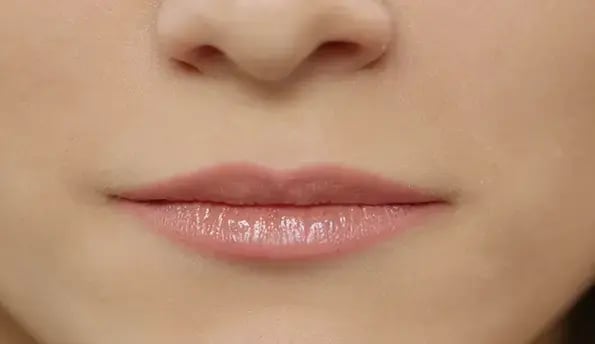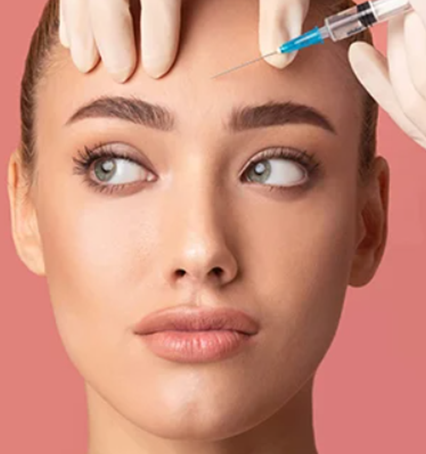What are Thin Lips?
Thin Lips: Characteristics and Considerations
Thin lips refer to a physical characteristic where a person's lips appear relatively narrow or thin in comparison to the average lip size. It is a subjective term, as the perception of lip thickness can vary from person to person and across different cultures and beauty standards. Some individuals may naturally have thinner lips due to genetics, while others may have fuller or plumper lips. Thin lips can also be influenced by factors such as age, as the natural collagen and fat content in the lips tends to decrease over time, resulting in a thinner appearance. Many people embrace and celebrate their unique lip shapes and sizes, recognizing that beauty comes in various forms.

What Causes Thin Lips?
Thin lips can be caused by various factors, including genetics, aging, and certain medical conditions. Here are some common causes:
Genetics:
The natural shape and size of your lips can be determined by your genetic makeup. If your parents or immediate family members have thin lips, there's a higher chance that you may have inherited this trait.
Aging:
As we age, our lips can lose volume and become thinner. This is because the production of collagen and elastin, proteins that provide structure and elasticity to the skin, decreases over time. The loss of these proteins can affect the fullness and plumpness of the lips.
Sun exposure:
Overexposure to the sun's harmful UV rays can accelerate the breakdown of collagen and elastin in the lips, leading to thinning over time.
Smoking:
Smoking is known to have a detrimental effect on skin health and can contribute to premature aging. The repetitive puckering of the lips when smoking can also contribute to the development of vertical lines around the mouth, making the lips appear thinner.
Medical conditions:
Certain medical conditions can cause thin lips as a symptom. For example, a condition called microcheilia involves the lips becoming abnormally thin, dry, and cracked. Other conditions like Down syndrome or Marfan syndrome may also contribute to thinner lips.
Injuries or trauma:
Accidents or injuries to the mouth area can result in scarring or tissue damage, which may affect the appearance and fullness of the lips.
Our mission is to create a world where every investment in modern beauty is Worth It.
Let's keep in touch
Get updates of the treatments you are interested
How Can I Make My Thin Lips Stand Out With Makeup?
- Exfoliate and moisturize
- Use a lip primer
- Overline your lips
- Choose the right lip color
- Add dimension with lip contouring
- Apply a highlighter
- Use a lip plumper
- Finish with a gloss

Can Cold Temperatures Damage My Lips?
Yes, cold temperatures can potentially damage your lips. Exposure to cold weather can cause the skin on your lips to become dry, chapped, and even cracked. The cold air, low humidity, and wind can strip the natural moisture from your lips, leading to discomfort and potential damage. When exposed to cold temperatures, the moisture on your lips evaporates quickly, leaving them susceptible to dehydration. This can result in dryness, flaking, and peeling. In severe cases, the lips may become cracked and painful, which can make it difficult to eat, speak, or even smile comfortably.
Additionally, licking your lips to provide temporary relief can worsen the situation. Saliva evaporates quickly, leaving the lips drier than before. Moreover, the enzymes in saliva can break down the protective barrier of the lips, making them more vulnerable to the harsh elements.
To protect your lips from cold temperature damage, it is important to take preventive measures, such as:
1. Use lip balm:
2. Cover your lips:
3. Hydrate
4. Avoid licking your lips
Our mission is to create a world where every investment in modern beauty is Worth It.
Let's keep in touch
Get updates of the treatments you are interested
How Do Lip Fillers Work?
Lip fillers, also known as dermal fillers or lip injections, are a cosmetic procedure used to enhance the volume and shape of the lips. They are typically composed of hyaluronic acid, a naturally occurring substance in the body that helps maintain moisture and adds plumpness to the skin.
The procedure involves injecting the lip filler into specific areas of the lips using a fine needle. The hyaluronic acid filler adds volume to the lips, resulting in a fuller appearance. The injections are usually performed by a trained medical professional, such as a dermatologist or a plastic surgeon, who can carefully control the amount and placement of the filler to achieve the desired results.

Treatment for Thin Lips, Lip Fillers
1. Consultation: Before the procedure, you'll have a consultation with the medical professional to discuss your goals, preferences, and any concerns. They will assess your lips and facial structure to determine the appropriate treatment plan.
2. Preparation: The medical professional may apply a topical anesthetic or administer a local anesthetic to numb the lips and minimize discomfort during the procedure.
3. Injection: Using a fine needle, the medical professional will inject small amounts of the lip filler into specific areas of the lips. They may use multiple injections to achieve the desired shape and volume. Throughout the procedure, the professional will monitor the progress and adjust the injections as necessary.
4. Massage and molding: Once the filler is injected, the medical professional may gently massage the lips to distribute the filler evenly and shape the lips for a natural appearance.
5. Results: The results of lip fillers are typically immediate, but you may experience some swelling initially. As the swelling subsides over the following days, you will see the final results of the procedure. The duration of the results varies depending on factors such as the type of filler used and individual metabolism, but it typically lasts for several months. Over time, the filler gradually breaks down and is naturally absorbed by the body.
Thin Lips: Characteristics and Considerations
Thin lips refer to a physical characteristic where a person's lips appear relatively narrow or thin in comparison to the average lip size. It is a subjective term, as the perception of lip thickness can vary from person to person and across different cultures and beauty standards. Some individuals may naturally have thinner lips due to genetics, while others may have fuller or plumper lips. Thin lips can also be influenced by factors such as age, as the natural collagen and fat content in the lips tends to decrease over time, resulting in a thinner appearance. Many people embrace and celebrate their unique lip shapes and sizes, recognizing that beauty comes in various forms.

What Causes Thin Lips?
Thin lips can be caused by various factors, including genetics, aging, and certain medical conditions. Here are some common causes:
Genetics:
The natural shape and size of your lips can be determined by your genetic makeup. If your parents or immediate family members have thin lips, there's a higher chance that you may have inherited this trait.
Aging:
As we age, our lips can lose volume and become thinner. This is because the production of collagen and elastin, proteins that provide structure and elasticity to the skin, decreases over time. The loss of these proteins can affect the fullness and plumpness of the lips.
Sun exposure:
Overexposure to the sun's harmful UV rays can accelerate the breakdown of collagen and elastin in the lips, leading to thinning over time.
Smoking:
Smoking is known to have a detrimental effect on skin health and can contribute to premature aging. The repetitive puckering of the lips when smoking can also contribute to the development of vertical lines around the mouth, making the lips appear thinner.
Medical conditions:
Certain medical conditions can cause thin lips as a symptom. For example, a condition called microcheilia involves the lips becoming abnormally thin, dry, and cracked. Other conditions like Down syndrome or Marfan syndrome may also contribute to thinner lips.
Injuries or trauma:
Accidents or injuries to the mouth area can result in scarring or tissue damage, which may affect the appearance and fullness of the lips.
Our mission is to create a world where every investment in modern beauty is Worth It.
Let's keep in touch
Get updates of the treatments you are interested
How Can I Make My Thin Lips Stand Out With Makeup?
- Exfoliate and moisturize
- Use a lip primer
- Overline your lips
- Choose the right lip color
- Add dimension with lip contouring
- Apply a highlighter
- Use a lip plumper
- Finish with a gloss

Can Cold Temperatures Damage My Lips?
Yes, cold temperatures can potentially damage your lips. Exposure to cold weather can cause the skin on your lips to become dry, chapped, and even cracked. The cold air, low humidity, and wind can strip the natural moisture from your lips, leading to discomfort and potential damage. When exposed to cold temperatures, the moisture on your lips evaporates quickly, leaving them susceptible to dehydration. This can result in dryness, flaking, and peeling. In severe cases, the lips may become cracked and painful, which can make it difficult to eat, speak, or even smile comfortably.
Additionally, licking your lips to provide temporary relief can worsen the situation. Saliva evaporates quickly, leaving the lips drier than before. Moreover, the enzymes in saliva can break down the protective barrier of the lips, making them more vulnerable to the harsh elements.
To protect your lips from cold temperature damage, it is important to take preventive measures, such as:
1. Use lip balm:
2. Cover your lips:
3. Hydrate
4. Avoid licking your lips
Our mission is to create a world where every investment in modern beauty is Worth It.
Let's keep in touch
Get updates of the treatments you are interested
How Do Lip Fillers Work?
Lip fillers, also known as dermal fillers or lip injections, are a cosmetic procedure used to enhance the volume and shape of the lips. They are typically composed of hyaluronic acid, a naturally occurring substance in the body that helps maintain moisture and adds plumpness to the skin.
The procedure involves injecting the lip filler into specific areas of the lips using a fine needle. The hyaluronic acid filler adds volume to the lips, resulting in a fuller appearance. The injections are usually performed by a trained medical professional, such as a dermatologist or a plastic surgeon, who can carefully control the amount and placement of the filler to achieve the desired results.

Treatment for Thin Lips, Lip Fillers
1. Consultation: Before the procedure, you'll have a consultation with the medical professional to discuss your goals, preferences, and any concerns. They will assess your lips and facial structure to determine the appropriate treatment plan.
2. Preparation: The medical professional may apply a topical anesthetic or administer a local anesthetic to numb the lips and minimize discomfort during the procedure.
3. Injection: Using a fine needle, the medical professional will inject small amounts of the lip filler into specific areas of the lips. They may use multiple injections to achieve the desired shape and volume. Throughout the procedure, the professional will monitor the progress and adjust the injections as necessary.
4. Massage and molding: Once the filler is injected, the medical professional may gently massage the lips to distribute the filler evenly and shape the lips for a natural appearance.
5. Results: The results of lip fillers are typically immediate, but you may experience some swelling initially. As the swelling subsides over the following days, you will see the final results of the procedure. The duration of the results varies depending on factors such as the type of filler used and individual metabolism, but it typically lasts for several months. Over time, the filler gradually breaks down and is naturally absorbed by the body.









